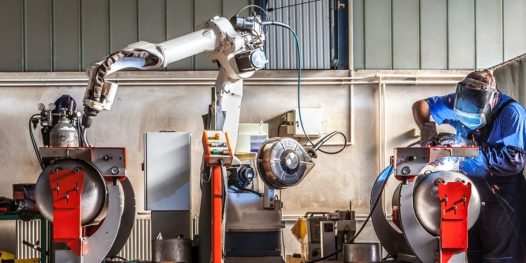Artificial Intelligence is omnipresent. Publications, networking events, blogs, talk shows, websites – regardless of where you consume your media, Artificial Intelligence or AI as it is widely known is having a significant impact. What once commenced in the annals of technology is now having an impact on all walks of professional and personal life.
As AI continues its march of success and becomes truly ubiquitous, businesses must actively consider how they will incorporate AI into their organisation and how they will leverage it.
One sphere where AI is bound to have a tremendous impact is that of the workplace itself. While some organisations are building robust plans to leverage AI into the workplace, many are neglecting the workforce component.
Every business must ask the question with conviction: “How will AI and our workforce interact in the workplace?”
A Forbes article states that approximately one in five workers is expected to work alongside AI by the end of 2022. Though many positions are disappearing due to AI integration, vast numbers of new jobs are taking their place. The introduction of AI in the workplace will foster human and machine collaboration, as people will support machine learning to drive the efficiency of AI.
AI facilitates new methods for employees to communicate. Chatbots deliver personalised responses to employee queries. Surveys suggest that in some cases, employees have found the engagement with chatbots more effective and efficient than dealing with humans. AI is already started permeating the HR function. Eventually, AI and associated technologies will populate the HR sector.
The workplace ladder is bound to shift as AI takes over organisational tasks such as booking meetings and writing job descriptions. AI will improve workforce planning by predicting changes to employee skills and identifying potential skill gaps in the workplace.
AI will enhance how both employers and employees navigate the job market. Employers will have access to more resources to find the right candidates for their business by tailoring job searches with screening algorithms for specific criteria. On the other end, employees will be able to accelerate their careers with personalised job searches. Once hired, AI and machines will provide upskilling opportunities and offer employees an array of new fields to gain experience.
Part of scaling WFM alongside technological advancements is prioritising employee retention. Instead of making redundancy a trend, businesses should consider offering employees development opportunities. Additionally, you should examine the skill sets of your current workforce and propose new roles for your current employees. Physical and manual skills will be less critical, but AI will not fulfil the need for higher cognitive skills; people will remain the ideal hire for creative thinking, decision making and data processing.
To evolve with AI and the technological landscape, people must remain at the centre of your workforce. Machines will not replace people. They will collaborate with them. Management teams and the HR sector will operate differently, as AI will fulfil menial organisational tasks, leaving creative and critical thinking up to people. Workplaces that focus on employee experience (EX) by facilitating open communication and development opportunities will see an engaged workforce and increased employee retention. Though the advent of AI in the workplace impacts jobs across the board, it will enhance the people-driven workforce, not eliminate it.
How will AI influence future workplaces and their employees?
Our infographic below outlines six AI trends and how they will enhance the workplace.

Are you concerned about how AI will impact your business? What impacts will it have on your workforce? Are you planning for this? A good place to start is by streamlining your workforce? This is where we at Tambla can help. We can help you plan, measure and optimise your workforce so you can focus on business success.
To learn more, please take a look at our Workforce Planning solution.





